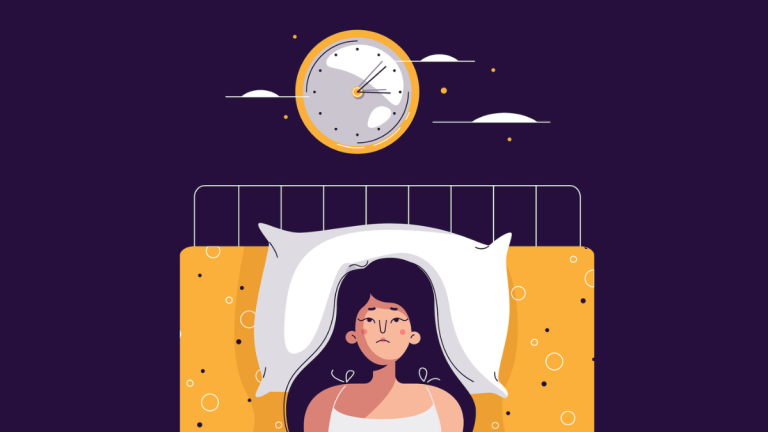You’re eating well, exercising, and doing everything “right.” So why are you still struggling with stubborn weight gain, mood swings, bloating, and night sweats?
It might not be your hormones themselves that are the problem. It might be your liver.
Most women don’t realize that hormone balance isn’t just about how much estrogen or progesterone your body makes—but how effectively your body clears these hormones out of your system – mainly through your liver, gut and kidneys. If your liver isn’t working efficiently, it may be the bottleneck in this situation, allowing excess hormones to build up in your system, intensifying perimenopause symptoms.
The Liver’s Role in Hormone Balance: More Than Just a Detox Machine
Your liver is your body’s hormone processing center. It’s responsible for breaking down and eliminating excess estrogen, progesterone, and cortisol to maintain balance so you feel your best. Most of this hard work is done by the liver in two key detoxification phases:
- Phase I Detoxification: Converts hormones into intermediate forms that may be weaker or stringer than their “original” forms. If this phase is sluggish, estrogen metabolites can linger too long, creating symptoms such as bloating, moodiness or headaches. This phase relies on a variety of nutrients including B vitamins, vitamin C, glutathione, and amino acids from the proteins you ingest to keep the wheels rolling and efficiently process hormones. Without adequate nutritional support, harmful metabolites can accumulate, contributing to estrogen dominance.
- Phase II Detoxification: Helps neutralize and eliminate these metabolites in your bile, urine, and stool. This phase depends on biochemical pathways called methylation, sulfation, and glucuronidation. Each of these pathways require specific nutrients to maintain activity. These nutrients can be magnesium, glycine, taurine, sulfur-containing foods (garlic, onions, cruciferous vegetables), and methyl donors (choline, folate, SAMe). Inefficiency in these pathways means hormones get reabsorbed instead of excreted, prolonging symptoms and hormonal imbalance. A situation I see in my practice often when women have slow phase II detoxification is the feeling of being “in PMS” for weeks before a period begins instead of the usual 1-3 days beforehand.
Signs Your Liver Might Be Struggling to Detox Hormones Efficiently
Women with sluggish hormone metabolism often experience:
✅ Stubborn weight gain, especially around the belly and hips.
✅ Mood swings, anxiety, or depression that seem random.
✅ Heavy, painful, or irregular periods due to excess estrogen.
✅ Bloating and digestive issues because your liver and gut work together for balance.
✅ Breast tenderness and fibrocystic breasts, a sign of estrogen buildup.
✅ Skin breakouts and melasma (dark patches on the skin), linked to poor estrogen clearance.
A patient I worked with last Summer, a high-achieving 47-year-old attorney, came to me exhausted and frustrated. She had gained 12 pounds in six months, her PMS was unbearable, and she felt constantly bloated. She was doing everything she had been told—exercising daily, eating a “healthy diet,” she even stopped drinking wine in the evenings and rededicated to taking her vitamins each day. However, when we took a closer look, her liver function tests revealed sluggish detoxification causing hormone imbalances that made her perimenopause issues more severe. Once we optimized her estrogen metabolism and supported her gut function, her symptoms improved dramatically within a few months.
Why Conventional Hormone Testing Isn’t Enough
If you’ve had a standard hormone panel blood test, you might have been told everything is “normal,” even when you feel awful. This is more common than you might realize. Many women that come into my practice have been told “everything looks normal” despite suffering many months or years of symptoms like fatigue, weight gain, sleepless nights, and body aches. That’s because traditional hormone testing has major limitations.
1. Blood Tests Only Measure “Bound” Hormones—Not the Active Ones Your Body Uses
- Blood tests primarily measure hormones attached to proteins like SHBG (sex hormone-binding globulin) or albumin. SHBG is a glycoprotein that binds to sex hormones such as estrogen, testosterone, and dihydrotestosterone (DHT), regulating their bioavailability. When SHBG levels are high, fewer free hormones are available for the body to use, which can significantly impact hormone function and symptoms.
- These bound hormones are inactive and your total hormone levels measured on a blood test includes both the free and bound (inactive) hormones—meaning these numbers don’t accurately reflect what hormones your body is actually using.
- Functional tests, such as the DUTCH test, measure free (active) hormones and their metabolites, which actually impact how you feel.
Measuring bound hormones is like counting parked cars on a highway rather than the ones actually driving. It tells you how many exist, but not how they’re functioning in real-time.
2. Blood Tests Provide a One-Time Snapshot, Not a Full Picture
- Hormones fluctuate constantly and vary widely during a normal day. In perimenopause, estrogen and progesterone levels can swing dramatically from one day to the next as well as throughout the month.
- A single blood draw only captures a moment in time, failing to track variations.
- Functional urine or saliva tests track hormone levels throughout the day or over an entire menstrual cycle, providing a fuller picture of trends and imbalances.
A woman might have “normal” estrogen levels in a morning blood test but experience spikes and crashes later, causing symptoms like mood swings, headaches, or hot flashes that never show up in her lab results.
3. Blood Tests Don’t Show How Well Your Body Is Clearing Hormones
Even if estrogen, progesterone, or testosterone appear normal in a blood test, your body may not be metabolizing or eliminating them efficiently.
Functional medicine tests analyze:
- Estrogen metabolism — Are you breaking down estrogen into protective or harmful byproducts?
- Liver detoxification markers — Is your body removing excess hormones efficiently?
- Methylation function — Does your body have the necessary B vitamins and cofactors to properly eliminate estrogen?
How to Optimize Your Liver for Better Hormone Balance
If testing reveals sluggish hormone detoxification, these science-backed strategies can help:
** Daily Nutrition Superstars for Liver Detox**
✅ Eat cruciferous vegetables (broccoli, cauliflower, Brussels sprouts, kale, and radishes) to support Phase I & II detoxification.
✅ Boost fiber intake (flaxseeds, chia seeds, popcorn, apples, blackberries and pears) to help eliminate excess estrogen via the gut.
✅ Hydrate with lemon water and green tea to support liver function by stimulating bile release.
✅ Limit alcohol, sugar and processed foods, which overload the liver.
Lifestyle Changes That Support Liver Health
✨ Regular movement (brisk walks, yoga) stimulates lymphatic drainage and liver function.
✨ Sweating (sauna or exercise) helps eliminate hormone byproducts.
✨ Manage stress—high cortisol levels slow down hormone metabolism.
Final Takeaway: Should You Get Functional Medicine Testing for Liver Detox?
If you’re struggling with perimenopause symptoms despite diet and lifestyle changes, testing your hormone detox pathways could uncover hidden imbalances.
Functional lab tests like the DUTCH test, liver enzyme panels, and genetic methylation tests can help personalize your hormone support plan.
By optimizing your liver’s ability to clear hormones, you can experience more balanced moods, better energy, and fewer perimenopause symptoms—naturally.






